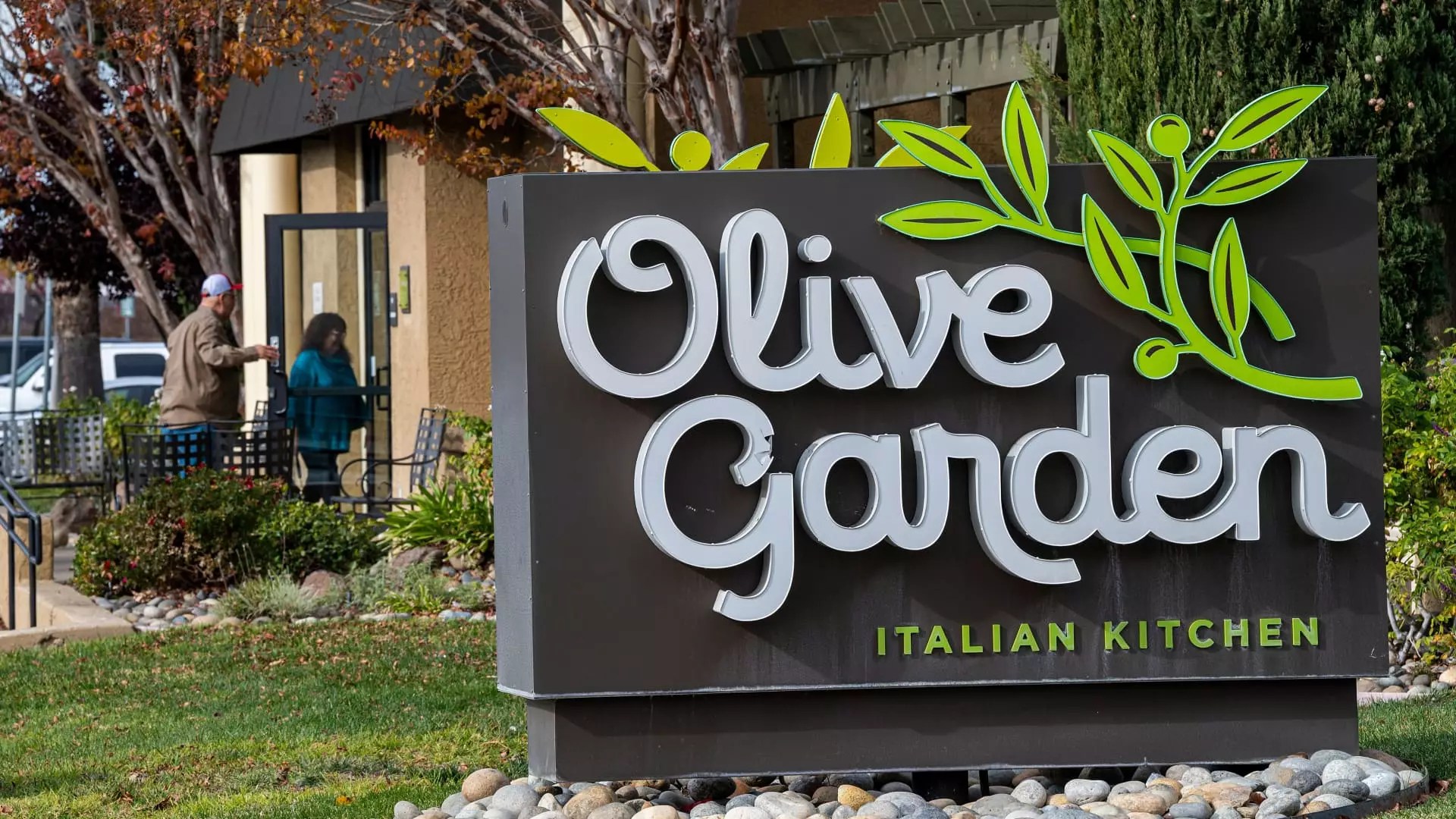In a climate rife with uncertainty, where consumer spending appears to be tightening, Darden Restaurants has boldly defied the odds. The company recently reported earnings that surpassed Wall Street’s estimates, stirring intrigue and optimism among investors. Darden’s adjusted earnings per share stood at $2.98, slightly surpassing the expected $2.97, while their revenue tallied $3.27 billion against forecasts of $3.26 billion. The figures underscore a robust performance, indicative of a strategic execution plan that draws consumers back into casual dining, even as they grapple with economic pressures.
One might ask, how did Darden pull this off? The answer lies in a vintage blend of innovation and a keen understanding of its customer base. Darden managed to record fiscal fourth-quarter net income of $303.8 million, which mirrors last year but still holds a notable position in the current economic narrative. The company’s strategic growth, including the acquisition of Chuy’s Tex Mex and the addition of 103 locations, has equipped Darden with the leverage to capture spending that otherwise might have redirected towards fast food and casual dining.
Consumer Spending Trends: Casual Dining Dominates
Darden’s CEO, Rick Cardenas, made a compelling observation during their recent earnings call: consumers are still keen to dine out, opting for longer dining experiences over quick casual eateries. This resilience illustrates a craving for quality and community that persists even in tough times. Notably, Consumers are trading fast food for the comfort and satisfaction that brands like Olive Garden and LongHorn Steakhouse provide.
What makes this trend particularly noteworthy is its resistance against broader economic currents. While other establishments see a decline, Olive Garden experienced a same-store sales growth of 6.9%, shattering predictions of 4.6%. LongHorn Steakhouse similarly outperformed, reporting a sales increase of 6.7%. The aggressive repositioning of Darden’s brand offerings underscores the efficacy of re-launching initiatives like Olive Garden’s celebrated “Buy One Take One” deal—an example of how nostalgia can lure customers back into the restaurant fold.
Challenges in Fine Dining: A Distress Signal?
While the casual dining segment flourishes, the fine dining market presents its own set of challenges. Darden’s premium brands, including Ruth’s Chris Steak House and The Capital Grille, saw a troubling decline of 3.3% in same-store sales, indicating a shift in consumer taste that cannot be ignored. The struggles faced by fine dining are part of a greater narrative shaping the dining landscape. It seems that higher-income households are not fully returning to their former dining patterns, prompting Darden to take strategic action on its underperforming segments.
It would not be surprising to see continued reassessments within this niche of Darden’s portfolio. As CFO Raj Vennam indicated, improvement is on the horizon for households earning $150,000 or more; nonetheless, if trends don’t shift soon, Darden may need to contemplate more drastic maneuvers to reinvigorate its fine dining reputation. Addressing underperforming units, such as the recently closed Bahama Breeze restaurants, is a necessary step in recalibrating focus on more lucrative areas of the business.
Innovation Meets Strategic Planning
Darden’s commitment to innovation shines through in ventures like Cheddar’s Scratch Kitchen piloting on-demand delivery through a partnership with Uber Direct. Such efforts reflect an awareness of modern consumer behaviors and the need for convenience amidst busy lifestyles. With delivery available in all but eight locations, Darden is making strides to capture a share of the burgeoning delivery market, positioning itself advantageously in an evolving dining landscape.
Moreover, the company’s $1 billion share repurchase program and a remarkable 19% year-to-date stock surge highlight a shareholder-friendly approach. Whether or not this translates into long-term value for Darden’s investors remains to be seen, but the current movement signals a strong endorsement from management.
In a nutshell, Darden’s strategic flexibility and customer-centric approach not only bolster its financial performance but also fortify its standing as a prevalent player amidst shifting dining paradigms. Wall Street may have estimated conservatively, but Darden’s results suggest that in a world craving connection, good food at reasonable prices will always find its audience.


Leave a Reply